 Overview
Overview
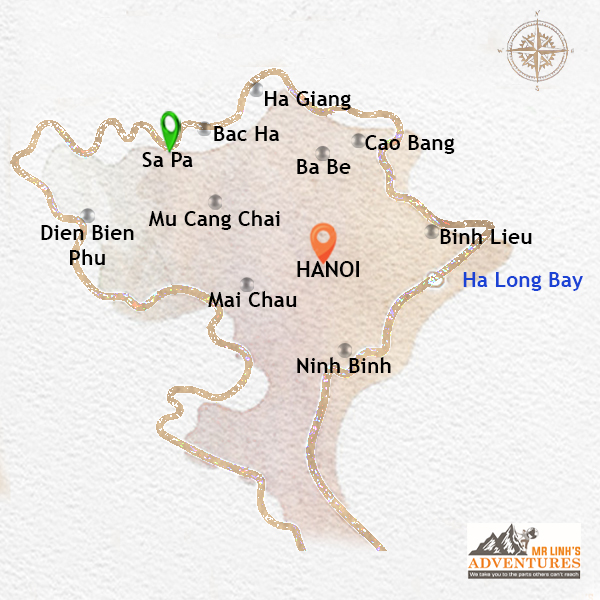 Sapa
Sapa, nestled in the mountains of northwestern Vietnam, in the province of Lào Cai, is an enchanting destination that attracts travelers seeking authenticity and breathtaking landscapes.
This former hill station, founded by the French, offers a unique blend of natural beauty, cultural richness, and opportunities for adventure.
Sapa is renowned for its spectacular terraced rice paddies, picturesque ethnic villages, and majestic peaks, offering total immersion in the life of local communities and an unforgettable experience in the heart of the mountains.
 Top Attractions
Top Attractions
Sapa is famous for mainly four unmissable experiences.
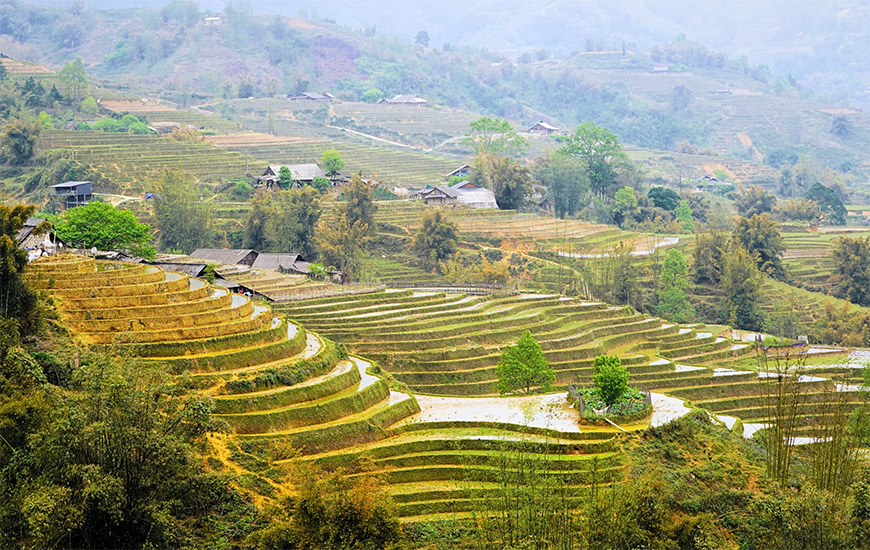
Sapa is famous for its rice terrace fields - Mr Linh's Adventures
Trekking through the Terraced Rice Paddies
The terraced rice paddies of Sapa are world-renowned. Hiking through these verdant fields, sculpted into the mountainside, is an immersive and visually stunning experience.
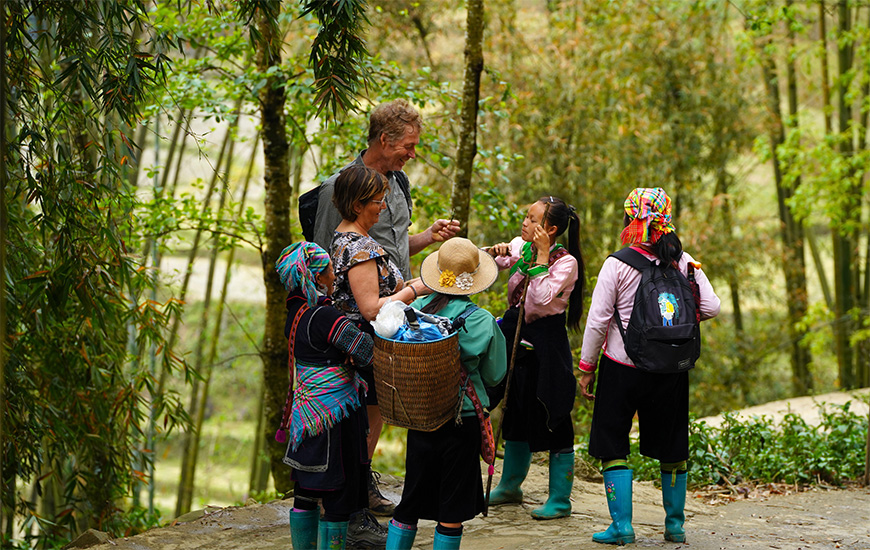
Meeting the Hmong & Dao People of Sapa - Mr Linh's Adventures
Meeting Ethnic Minorities
Sapa is home to several minority ethnic groups, such as the Hmong, Dao, and Tày. Visiting their villages offers a unique opportunity to discover their cultures, traditions, and ways of life.
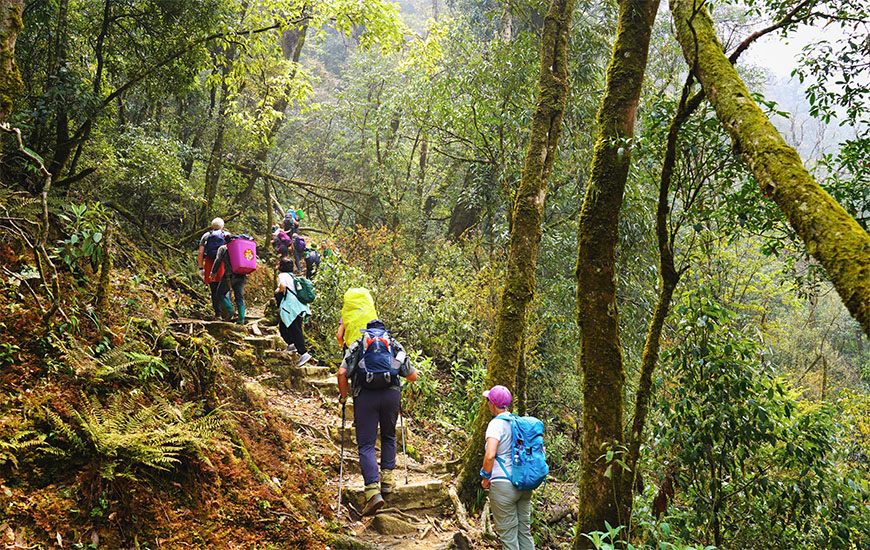
Ascending the "Roof of Indochina" - Mr Linh's Adventures
Ascending Mount Fansipan
Nicknamed the "Roof of Indochina," Mount Fansipan rises to an altitude of 3,143 meters. Its ascent, accessible to experienced hikers, offers spectacular panoramic views of the surrounding mountains.
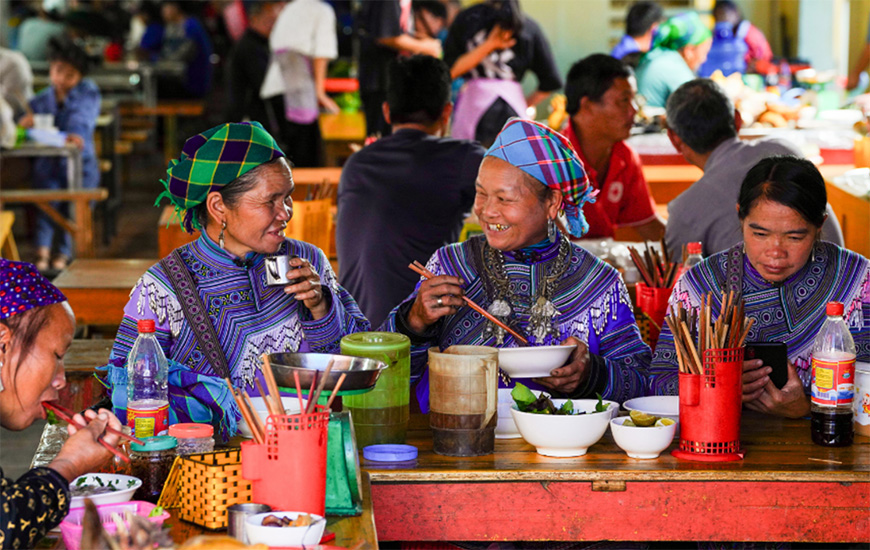
At the market - Mr Linh's Adventures
Visiting Sapa Market
The local market is a lively place where residents of the surrounding villages gather to sell their handicrafts, traditional clothing, and fresh produce. It's an excellent opportunity to immerse yourself in the local atmosphere and make authentic purchases.
 See & Do
See & Do
Sapa offers a multitude of activities for adventurous travelers!
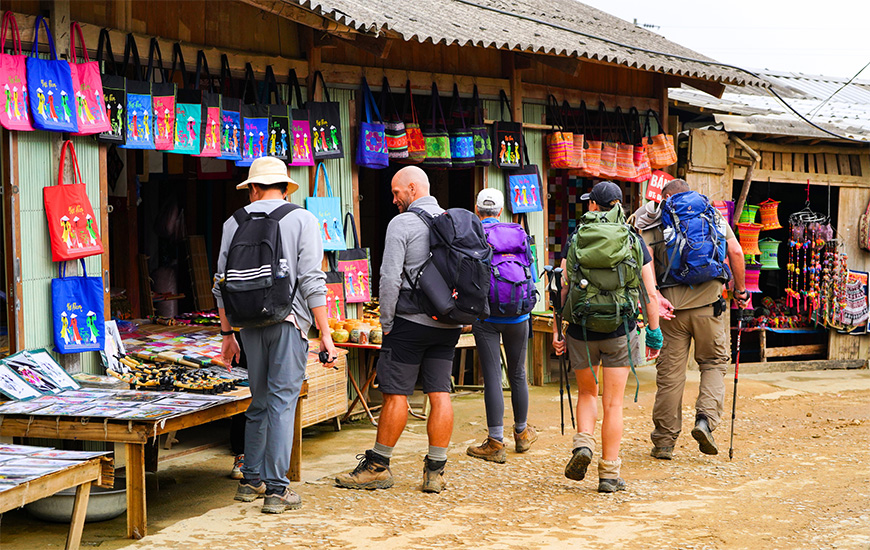
Exploring Culture and Handicrafts Along the Trail - Mr Linh's Adventures
Hiking and Trekking
Hiking trails of all levels crisscross the region, offering opportunities to explore varied landscapes, from lush forests to refreshing waterfalls.
Homestays
Immerse yourself in the local culture by staying with a host family. Share meals, learn traditional customs, and live an authentic and enriching experience.
Mountain Biking Excursions
Explore the surroundings of Sapa by mountain bike and discover remote villages and hidden landscapes.
Discovering Waterfalls: Several magnificent waterfalls are located near Sapa, offering refreshing places to relax and swim.
 Go Green
Go Green
Mr. Linh's Adventures offers a range of tours designed to give you an authentic and unforgettable experience in Sapa and its surroundings:
Tailor-made Treks: Personalized itineraries adapted to your desires and your fitness level.
Cultural Discovery Tours: Immersion in the heart of ethnic villages, meetings with locals, and sharing of their traditions.
Adventure Expeditions: Ascents of Mount Fansipan, explorations of caves, and river rafting.
 Heritage
Heritage
Between the peaks and valleys of Sapa, the H'mong and Dao ethnic communities lived according to their ancestral traditions, as did the Tày, Giáy, and Xa Pho. This existence was profoundly disrupted by the arrival of the French in the late 1880s. The year 1881 marked a turning point with the placing of Lao Cai under the control of the colonial army, initiating a period of development that would transform the region. The construction of a military sanatorium, relying on the supposed benefits of the mountain air, was one of the flagship projects.
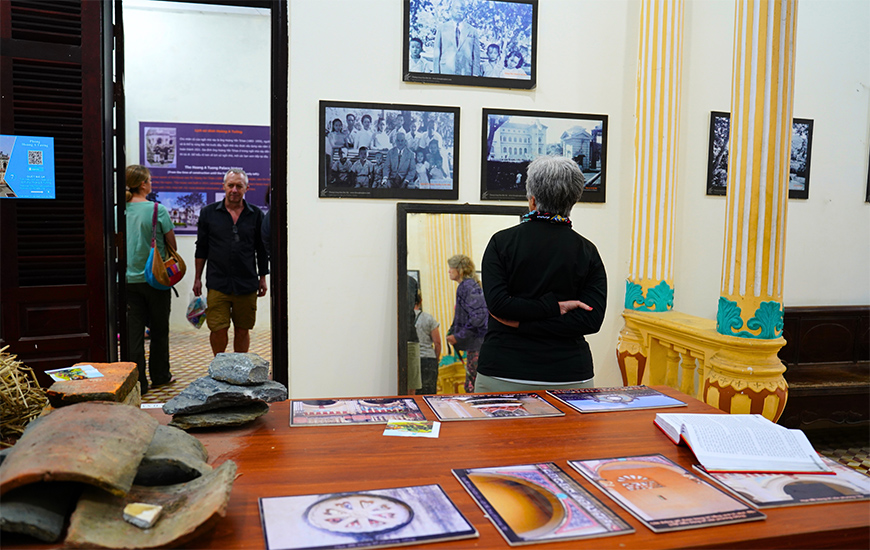
Echoes of the past, exploring Hoang A Tuong palace - Mr Linh's Adventures
Gradually, French villas multiplied, transforming Sapa into a popular high-altitude resort. While these constructions bear witness to an era, most were destroyed during the Vietnam War. It was not until the 1960s that a new wave of populations flocked to Sapa from the surrounding regions.
Fully open to tourism since 1993, Sapa has experienced rapid development, adapting its infrastructure to the growth of tourism. Restaurants, accommodations, and local markets have become pillars of the local economy. While the city offers a wide choice of options, the true Sapa experience is lived beyond its center, meeting the communities that cultivate these exceptional lands.
A popular trekking destination, Sapa attracts hikers seeking authenticity each year, who explore remote villages and stay in homestays. Mount Fansipan, the "Roof of Indochina" culminating at 3,143 meters, reinforces the region's appeal. Whether hiking or cultural discovery, Sapa offers pure air, grandiose landscapes, and a rich heritage.
Furthermore, several traditional festivals are celebrated throughout the year, offering a fascinating glimpse into local cultures. And finally, located in the city, the Sapa Museum offers an overview of local history and the region's cultures. It traces the evolution of Sapa, from the colonial era to the present day, exploring the influence of history, traditions, and the environment on local communities. The exhibition of ethnic crafts is an ideal introduction to further explore Sapa.
 Food & Drinks
Food & Drinks
Sapa's culinary scene is rich and varied, offering a wide range of options: traditional restaurants, French-style cafes, Vietnamese and international cuisines, and even gourmet restaurants. The richness of the terroir and the freshness of the climate allow for a diversified production of quality products.
The French influence is felt in some establishments, where you can enjoy crispy baguettes and fresh coffees for breakfast, or pastries during a hike. Sapa also offers hearty local dishes, perfect for hikers, and adapted to the mountain climate.
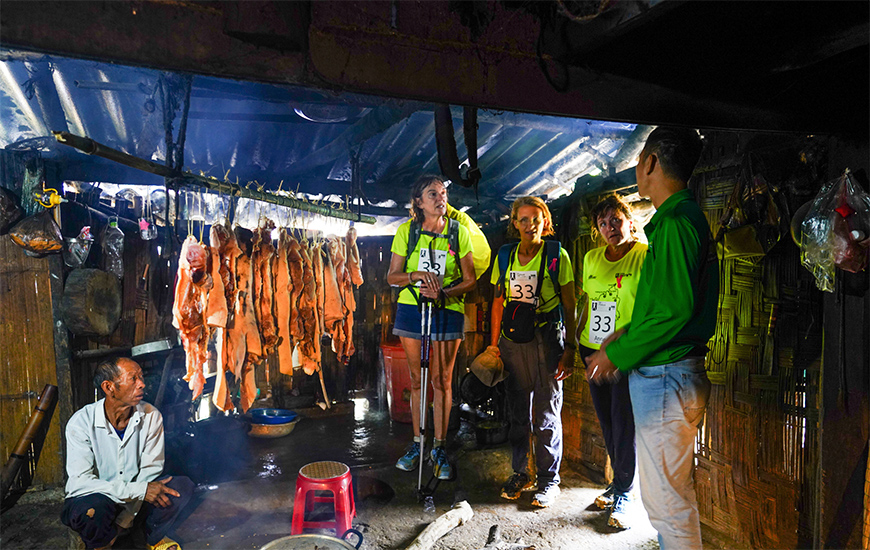
Sapa’s Hidden Kitchens: Discovering Traditional Smoked Meats - Mr Linh's Adventures
Thắng Cố
A traditional dish made with horse or buffalo meat, simmered with local spices.
Rau cải mèo
A local green vegetable, often sautéed with garlic.
Cơm Lam
Rice cooked in bamboo. It is a culinary specialty found in several regions of Southeast Asia, with variations depending on the country and ethnicity. In Vietnam, and especially in Sapa, it is associated with mountain populations and ethnic minorities.
Sapa Wine
A local rice wine, often flavored with fruit.
 Directions
Directions
Location
Sapa is located in the province of Lào Cai, in northwestern Vietnam, about 350 km from Hanoi.
How to get there from Hanoi
Night Train: A comfortable and scenic way to get to Lào Cai, then a short bus ride to Sapa. (Variable price, about 10-20 USD per trip - Departure from Hanoi around 9 pm, 10 pm and arrival in Sapa in the early morning around 5 am, 6 am)
Night Bus: Direct buses connect Hanoi to Sapa. (Variable price, about 10-15 USD per trip)
Best Season
The best time to visit Sapa is from March to May and from September to November, when the weather is dry and sunny.
Sapa is an ideal destination for travelers seeking adventure, discovery, and sharing. Mr. Linh's Adventures is there to accompany you on this unforgettable experience.